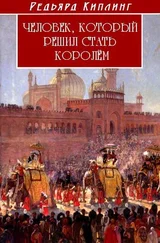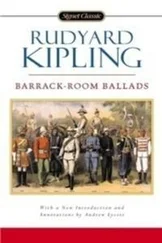Джозеф Киплинг - From Sea to Sea
Здесь есть возможность читать онлайн «Джозеф Киплинг - From Sea to Sea» весь текст электронной книги совершенно бесплатно (целиком полную версию без сокращений). В некоторых случаях можно слушать аудио, скачать через торрент в формате fb2 и присутствует краткое содержание. Год выпуска: 2014, Издательство: epubBooks Classics, Жанр: Биографии и Мемуары, Публицистика, на английском языке. Описание произведения, (предисловие) а так же отзывы посетителей доступны на портале библиотеки ЛибКат.
- Название:From Sea to Sea
- Автор:
- Издательство:epubBooks Classics
- Жанр:
- Год:2014
- ISBN:нет данных
- Рейтинг книги:3 / 5. Голосов: 1
-
Избранное:Добавить в избранное
- Отзывы:
-
Ваша оценка:
- 60
- 1
- 2
- 3
- 4
- 5
From Sea to Sea: краткое содержание, описание и аннотация
Предлагаем к чтению аннотацию, описание, краткое содержание или предисловие (зависит от того, что написал сам автор книги «From Sea to Sea»). Если вы не нашли необходимую информацию о книге — напишите в комментариях, мы постараемся отыскать её.
From Sea to Sea — читать онлайн бесплатно полную книгу (весь текст) целиком
Ниже представлен текст книги, разбитый по страницам. Система сохранения места последней прочитанной страницы, позволяет с удобством читать онлайн бесплатно книгу «From Sea to Sea», без необходимости каждый раз заново искать на чём Вы остановились. Поставьте закладку, и сможете в любой момент перейти на страницу, на которой закончили чтение.
Интервал:
Закладка:
But the Englishman went first to the Hospital, and found the out–patients beginning to arrive. A Hospital cannot tell lies about its own progress as a municipality can. Sick folk either come or lie in their own villages. In the case of the Mayo Hospital, they came, and the operation book showed that they had been in the habit of coming. Doctors at issue with provincial and local administrations, Civil Surgeons who cannot get their indents complied with, ground–down and mutinous practitioners all India over, would do well to visit the Mayo Hospital, Jeypore. They might, in the exceeding bitterness of their envy, be able to point out some defects in its supplies, or its beds, or its splints, or in the absolute isolation of the women's quarters from the men's.
From the Hospital the Englishman went to the Museum in the centre of the Gardens, and was eaten up by it, for Museums appealed to him. The casing of the jewel was in the first place superb—a wonder of carven white stone of the Indo–Saracenic style. It stood on a stone plinth, and was rich in stone–tracery, green marble columns from Ajmir, red marble, white marble colonnades, courts with fountains, richly carved wooden doors, frescoes, inlay, and colour. The ornamentation of the tombs of Delhi, the palaces of Agra, and the walls of Amber have been laid under contribution to supply the designs in bracket, arch, and soffit; and stone–masons from the Jeypore School of Art have woven into the work the best that their hands could produce. The building in essence if not in the fact of to–day, is the work of Freemasons. The men were allowed a certain scope in their choice of detail and the result—but it should be seen to be understood, as it stands in those Imperial Gardens. And, observe, the man who had designed it, who had superintended its erection, had said no word to indicate that there were such a thing in the place, or that every foot of it, from the domes of the roof to the cool green chunam dadoes and the carving of the rims of the fountains in the courtyard, was worth studying! Round the arches of the great centre court are written in Sanskrit and Hindi, texts from the great Hindu writers of old, bearing on the beauty of wisdom and the sanctity of true knowledge.
In the central corridor are six great frescoes, each about nine feet by five, copies of illustrations in the Royal Folio of the Razmnameh , the Mahabharata , which Abkar caused to be done by the best artists of his day. The original is in the Museum, and he who can steal it will find a purchaser at any price up to fifty thousand pounds.
V
Of the Sordidness of the Supreme Government on the Revenue Side; and of the Palace of Jeypore. a Great King's Pleasure-house, and the Work of the Servants of State
Internally, there is, in all honesty, no limit to the luxury of the Jeypore Museum. It revels in "South Kensington" cases—of the approved pattern—that turn the beholder homesick, and South Kensington labels, whereon the description, measurements, and price of each object are fairly printed. These make savage one who knows how labelling is bungled in some of the Government Museums—our starved barns that are supposed to hold the economic exhibits, not of little States, but of great Provinces.
The floors are of dark red chunam, overlaid with a discreet and silent matting; the doors, where they are not plate glass, are of carved wood, no two alike, hinged by sumptuous brass hinges on to marble jambs and opening without noise. On the carved marble pillars of each hall are fixed revolving cases of the South Kensington pattern to show textile fabrics, gold lace, and the like. In the recesses of the walls are more cases, and on the railing of the gallery that runs round each of the three great central rooms, are fixed low cases to hold natural history specimens and wax models of fruits and vegetables.
Hear this, Governments of India from the Punjab to Madras! The doors come true to the jamb, the cases, which have been through a hot weather, are neither warped nor cracked, nor are there unseemly tallow–drops and flaws in the glasses. The maroon cloth, on or against which the exhibits are placed, is of close texture, untouched by the moth, neither stained nor meagre nor sunfaded; the revolving cases revolve freely without rattling; there is not a speck of dust from one end of the building to the other, because the menial staff are numerous enough to keep everything clean, and the Curator's office is a veritable office—not a shed or a bath–room, or a loose–box partitioned from the main building. These things are so because money has been spent on the Museum, and it is now a rebuke to all other Museums in India from Calcutta downwards. Whether it is not too good to be buried away in a native State is a question which envious men may raise and answer as they choose. Not long ago, the editor of a Bombay paper passed through it, but having the interests of the Egocentric Presidency before his eyes, dwelt more upon the idea of the building than its structural beauties; saying that Bombay, who professed a weakness for technical education, should be ashamed of herself. And he was quite right.
The system of the Museum is complete in intention, as are its appointments in design. At present there are some fifteen thousand objects of art, covering a complete exposition of the arts, from enamels to pottery and from brass–ware to stone–carving, of the State of Jeypore. They are compared with similar arts of other lands. Thus a Damio's sword—a gem of lacquer–plated silk and stud–work—flanks the tulwars of Marwar and the jezails of Tonk; and reproductions of Persian and Russian brass–work stand side by side with the handicrafts of the pupils of the Jeypore School of Art. A photograph of His Highness the present Maharaja is set among the arms, which are the most prominent features of the first or metal–room. As the villagers enter, they salaam reverently to the photo, and then move on slowly, with an evidently intelligent interest in what they see. Ruskin could describe the scene admirably—pointing out how reverence must precede the study of art, and how it is good for Englishmen and Rajputs alike to bow on occasion before Geisler's cap. They thumb the revolving cases of cloths do those rustics, and artlessly try to feel the texture through the protecting glass. The main object of the Museum is avowedly provincial—to show the craftsman of Jeypore the best that his predecessors could do, and what foreign artists have done. In time—but the Curator of the Museum has many schemes which will assuredly bear fruit in time, and it would be unfair to divulge them. Let those who doubt the thoroughness of a Museum under one man's control, built, filled, and endowed with royal generosity—an institution perfectly independent of the Government of India—go and exhaustively visit Dr. Hendley's charge at Jeypore. Like the man who made the building, he refuses to talk, and so the greater part of the work that he has in hand must be guessed at.
At one point, indeed, the Curator was taken off his guard. A huge map of the kingdom showed in green the portions that had been brought under irrigation, while blue circles marked the towns that owned dispensaries. "I want to bring every man in the State within twenty miles of a dispensary—and I've nearly done it," said he. Then he checked himself, and went off to food–grains in little bottles as being neutral and colourless things. Envy is forced to admit that the arrangement of the Museum—far too important a matter to be explained off–hand—is Continental in its character, and has a definite end and bearing—a trifle omitted by many institutions other than Museums. But—in fine, what can one say of a collection whose very labels are gilt–edged! Shameful extravagance? Nothing of the kind—only finish, perfectly in keeping with the rest of the fittings—a finish that we in kutcha [3] casual: half–finished.
India have failed to catch.
Интервал:
Закладка:
Похожие книги на «From Sea to Sea»
Представляем Вашему вниманию похожие книги на «From Sea to Sea» списком для выбора. Мы отобрали схожую по названию и смыслу литературу в надежде предоставить читателям больше вариантов отыскать новые, интересные, ещё непрочитанные произведения.
Обсуждение, отзывы о книге «From Sea to Sea» и просто собственные мнения читателей. Оставьте ваши комментарии, напишите, что Вы думаете о произведении, его смысле или главных героях. Укажите что конкретно понравилось, а что нет, и почему Вы так считаете.












